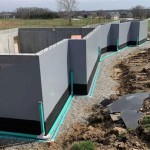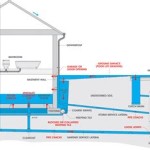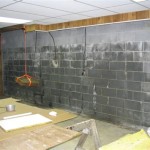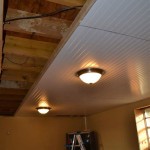Basement Watchdog Pump Was Activated: Check Main For Failure
The activation of a Basement Watchdog sump pump signifies that water is accumulating in the sump pit. While this is the pump's intended function, repeated or prolonged activation, especially if accompanied by an alarm indicating a Basement Watchdog pump activation, necessitates a thorough investigation to identify the underlying cause. One key area of concern is the potential failure or malfunction of the municipal water supply line, commonly referred to as the "main." This article will explore the connection between a constantly running sump pump, a Basement Watchdog alarm, and a possible leak in the main water line, outlining the steps to diagnose and address the issue.
Sump pumps are designed to remove excess water from beneath a building's foundation, preventing water damage and structural problems. When groundwater levels rise due to heavy rainfall or snowmelt, water naturally seeps into the soil surrounding the foundation. This water then drains into the sump pit, a basin located beneath the basement floor. The sump pump is activated when the water level in the pit reaches a predetermined point, pumping the water away from the building through a discharge pipe. Regularly activated sump pumps perform a crucial function, but constant or unusual activity warrants attention.
The Basement Watchdog is a brand of sump pump systems, often including backup pumps and alarm systems. The alarm is specifically designed to alert homeowners to various potential problems, such as a primary pump failure, high water levels, or a power outage. When the Basement Watchdog alarm sounds in conjunction with the primary pump running frequently, it suggests a more serious issue than simply heavy rainfall. One such issue is the influx of potable water into the sump pit, which can be caused by a leak in the main water line.
Identifying a Main Water Line Leak Through Sump Pump Activity
A crucial step in diagnosing the cause of persistent sump pump activation is to determine the source of the water. If the problem is solely due to groundwater intrusion, the sump pump activity will typically correlate with periods of heavy precipitation or snowmelt. However, if the sump pump is running frequently or continuously, even during dry periods, a leak in the main water line becomes a strong possibility. Here's how to investigate:
First, carefully observe the water entering the sump pit. If the water appears clear and lacks the earthy smell often associated with groundwater, this is a significant clue pointing towards a potable water source. Groundwater typically carries sediment and minerals, giving it a slightly murky appearance and a distinct odor. Clear, odorless water, on the other hand, is more likely to be coming from a water supply line.
Second, monitor the water meter. The water meter tracks the amount of water consumed by the property. If the meter continues to register water usage even when all known water fixtures (faucets, toilets, appliances) are turned off, this strongly indicates a leak somewhere in the plumbing system. Pay close attention to the low-flow indicator, a small dial that registers even minor water movement. If this indicator is spinning when no water is being used, a small but persistent leak is present.
Third, conduct a pressure test. A plumbing professional can perform a pressure test to assess the integrity of the water lines. This involves isolating sections of the plumbing system and pressurizing them with air or water. A drop in pressure indicates a leak in the tested section. This test can help pinpoint the location of the leak, whether it's in the main line coming into the house or within the interior plumbing.
Consequences of a Water Main Leak
A leaking main water line can have several detrimental consequences, extending beyond a continuously running sump pump and a high water bill. Unchecked, the leak can lead to significant structural damage to the building's foundation. The constant presence of water saturating the soil around the foundation can weaken the concrete and cause cracks to form. This can compromise the structural integrity of the building and require costly repairs.
Furthermore, a leaking water line can erode the soil around the pipe, creating voids and potentially causing the surrounding ground to settle. This can damage landscaping, walkways, and even the driveway. In severe cases, the settling ground can put stress on the building's foundation, exacerbating existing problems or creating new ones.
Beyond structural damage, a water leak can also contribute to mold and mildew growth within the basement. The constant moisture creates an ideal environment for these organisms to thrive, leading to unpleasant odors, health problems, and further damage to building materials. Mold remediation can be expensive and disruptive, making it crucial to address water leaks promptly.
Addressing a Suspected Water Main Leak
If the investigations suggest a leak in the main water line, immediate action is necessary to mitigate the potential damage. The first step is to contact a licensed plumbing professional. A qualified plumber has the expertise and equipment to accurately diagnose the location of the leak and perform the necessary repairs. Attempting to repair the main water line without proper training and equipment can be dangerous and may result in further damage.
Before the plumber arrives, it's advisable to locate the main water shut-off valve and familiarize oneself with its operation. This valve controls the flow of water into the entire property. In an emergency, shutting off the main water supply can prevent further water damage. The location of the main shut-off valve varies depending on the property, but it's often located near the water meter, either inside the house or in an underground box outside.
Once the plumber has identified the leak, they will recommend the appropriate repair method. Depending on the severity and location of the leak, the repair may involve patching the existing pipe, replacing a section of pipe, or replacing the entire main water line. The plumber will provide a detailed explanation of the repair process and the associated costs.
Preventative Measures and Routine Maintenance
While detecting and repairing a water main leak is crucial, implementing preventative measures and performing routine maintenance can help minimize the risk of future leaks. One important step is to periodically inspect exposed water pipes for signs of corrosion, leaks, or damage. Look for rust, discoloration, or damp spots on the pipes or surrounding areas.
Another preventative measure is to protect exposed pipes from freezing temperatures. Freezing water expands, which can cause pipes to burst. Insulating exposed pipes, especially those in unheated areas such as basements or crawl spaces, can help prevent freezing. During periods of extreme cold, it's also a good idea to let a faucet drip slightly to keep water moving through the pipes.
Finally, consider investing in a whole-house water leak detection system. These systems use sensors to monitor water flow and pressure throughout the plumbing system. If a leak is detected, the system automatically shuts off the water supply and alerts the homeowner. While these systems can be an upfront investment, they can save significant money and prevent considerable damage in the long run.
The Interplay of Sump Pump, Alarm, and Main Failure
The Basement Watchdog's alarm serves as an early warning system, signaling potential problems that might otherwise go unnoticed. Its activation, especially when the sump pump is running excessively, highlights the need for comprehensive diagnostics. The connection between a constantly running sump pump, an activated Basement Watchdog alarm, and a potential main water line failure is a complex issue that requires careful attention. By systematically investigating the source of the water, monitoring water usage, consulting with a plumbing professional, and implementing preventative measures, homeowners can protect their property from water damage and ensure the longevity of their plumbing systems.

Economical Backup Solution Basement Watchdog

Basement Watchdog Pump Was Activated Alarm

Battery Backup Sump Pump Troubleshooting Guide
Special Instruction Qxd

Basement Watchdog Big Dog Transformer Failure Jim S Projects
Emergency Instruction Qxd
Combination Primary And Backup Sump Pump System

Frequently Asked Questions Basement Watchdog

Economical Backup Solution Basement Watchdog

The Basement Watchdog Combo Instruction Manual
Related Posts







